When we recently mentioned that we were considering starting a podcast, one of the first questions was about the gear we are using. In this post we talk about the setup we put together, and how we use it.
Podcast Gear
If you have been on planet Earth for the last decade, you probably already know what a podcast is. Maybe you already have a favorite podcast, or maybe you want to start your own podcast.
One of the first questions we had when we started looking for audio gear was how much equipment we actually needed. The short answer is “a microphone and a computer”, but as with most short answers, this one leaves out a lot. While you don’t need thousands of dollars of recording equipment, you probably will want more than just your phone or computer’s built-in microphone in your kit of podcast gear.
There are hundred or thousands (if not hundreds of thousands) of microphones available to purchase. Some people will be happy with a simple USB microphone. As we had multiple uses in mind for this equipment, we went a slightly different route.
Audio Interface
Most computer sound cards have a jack to plug in a microphone. Unfortunately, the computer’s sound card is usually limited to one microphone. We wanted a more robust solution so that we could run multiple microphones – two condenser mics, or one condenser and one shotgun, etc.
Focusrite Scarlet 2i2
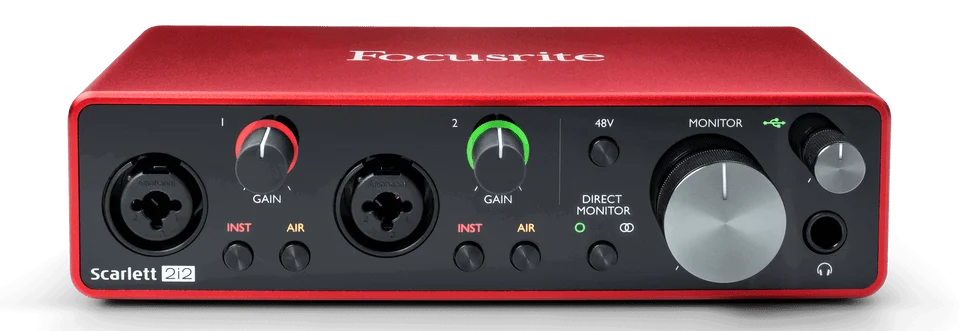
This is the Focusrite Scarlet 2i2. This is a USB interface device that allows us to plug in up to two XLR microphones. This interface will accept microphones that require 48V phantom power, as well as microphones which do not need phantom power. The device offers direct monitoring and more.

Find out more about the Focusrite Scarlet here: https://us.focusrite.com/products/scarlett-2i2-3rd-gen
Microphones
As we previously mentioned, there are a LOT of microphones on the market. Even after reducing the options to XLR the field is still very large. After reading reviews and researching for what seemed like a very long time, we made the decision to purchase the following microphones:
Condenser Mics
NEEWER NW-800
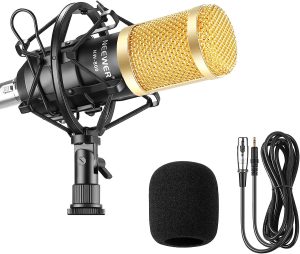
This is a great little mic that won’t break the budget. XLR interface and supports phantom power. We have two of these microphones in our podcast gear. They work very well and we have no complaints.

NEEWER Uni-directional (Shotgun) Microphone
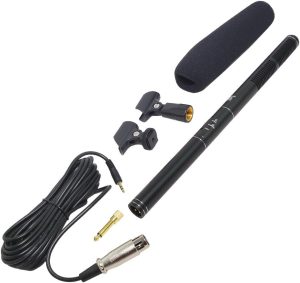
This shotgun microphone works well. When in uni-directional mode sound only comes from one direction. Noise from the other directions is minimal, if detected at all.
NB: 48V phantom power is required in order for this microphone to operate in unidirectional mode. As of this writing the NEWER shotgun mic is unavailable, but the link will take you to the same mic under a different brand.

Movo VXR10-PRO External Microphone

While not directly part of our podcast gear, we purchased this microphone for better audio recording outside the studio, such as filming with a cell phone. This mic provides much better sound recording than the built in microphone on any phone. With USB-C and 1/8″ cables provided, this microphone should interface to all (or at least most) of your devices.

MOVO Lapel Microphone
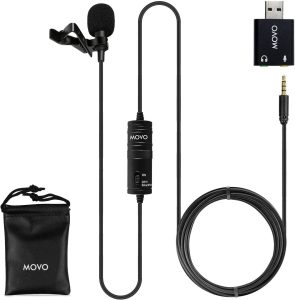
We received this lapel mic as part of a special offer when we purchased the MOVO external mic above. It’s a great bit of podcast gear for those lapel mic moments.

Other Helpful Items
These items aren’t required podcast gear, but might be helpful.
Cable Matters XLR Cables
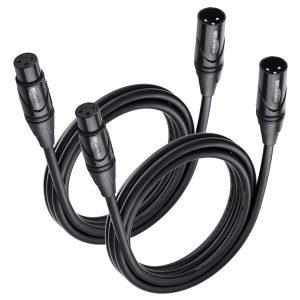
The XLR cables that come with these microphones may or may not work when you get them. They may or may not work a month later. Better quality XLR cables are probably in your future. We like these from Cable Matters.

Xvive Phantom Power Injector
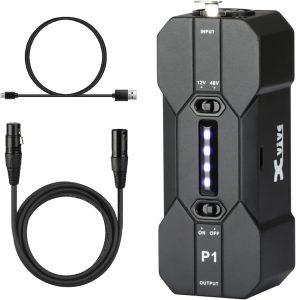
This device injects phantom power into a microphone which requires it. The function that this device provides is fulfilled by the Scarlet in our setup, but would be useful in a setup which does not include an external DAC. For example, this will allow an XLR mic to be plugged directly into a computer’s sound card using the appropriate cable or converter (XLR -> 1/8″).
MAONO USB Microphone

If all of this talk of DACs, XLR and phantom power is over your head, or if you just want to get started right away, you could do worse than this microphone. This microphone supports USB-C as well as XLR interfaces with phantom power. This might be a good starter microphone to get started without springing for the whole XLR setup up front.

Conclusion
If the question is “What gear should I buy to start a podcast?” our answer would have to be “It depends”.
As we said, we have multiple uses in mind for this equipment that are not directly related to a podcast. Sam specifically wanted to be able to move the entire recording setup between computers by only swapping one cable. This setup accomplishes that goal and more, and we are very happy with this podcast gear.
Good luck on your podcast!